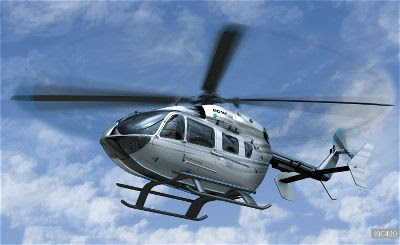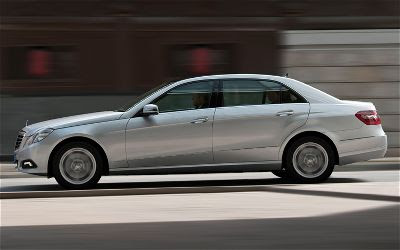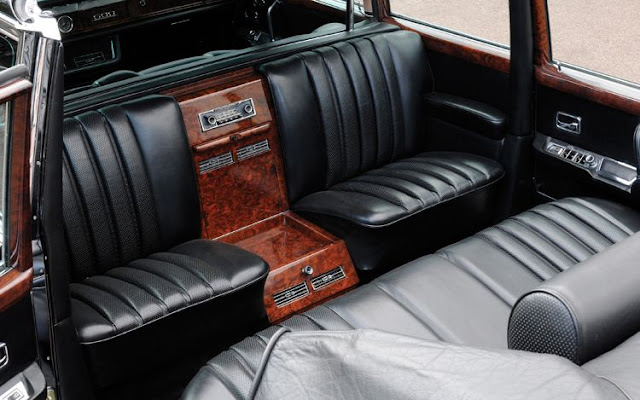Through its first two generations, the
Dodge Durango was sort of an enthusiast secret, a quietly competent and unusually fun-to-drive SUV. After
shepherding a last-gen truck for 40,000 miles, we concluded, “Does it get better than this? Maybe. But not much.” Sales of the Durango certainly didn’t get any better. After moving 137,148 of the trucks in 2004, Dodge watched Durango sales nose-dive to barely half that two years later and a mere 21,420 in 2008, after which point the Durango disappeared.
Now it’s back. If you studied only the critical dimensions, which are nearly dead-on with the old truck’s, you’d be forgiven for thinking Dodge spent the interim working on a face lift. But you’d be wrong. For starters, there’s the small matter of the absentee frame. The formerly body-on-frame Durango now rides on a unibody platform it shares with the
Jeep Grand Cherokee, the same platform Mercedes-Benz will employ under its next ML and GL.
Durango Tango
Whereas its Jeep cousin perpetuates that brand’s dirt fetish, the Durango pursues sport in a different discipline. The two trucks’ suspension layouts are the same, but the Dodge is longer than the Jeep by a full 10 inches, with an extra five between its axles. Additionally, the Durango’s shock and spring rates are stiffer, and it has larger anti-roll bars. The R/T further stiffens the shocks and springs and lowers the ride height by 0.8 inch. Like the Heat and Citadel trims, the R/T includes 20-inch wheels.
All that stiffening paid off. The Durango is a handler, with minimal body roll—particularly for something so tall. It’s also very well balanced. Note that its 51/49-percent front-to-rear weight distribution is the sort of figure that gets us excited about sports sedans. There’s just a touch of understeer at the limit, and a delightful enthusiasm for rotation, which is easy to control and rein in with the all-wheel-drive system. We recorded 0.81 g of stick on the skidpad, better by 0.06 than the non-R/T Durango we tested.
Steering like this is a treat in an SUV. It’s slow off-center—all the better for relaxed highway tracking—and effort builds as the limit nears and the wheel offers a good amount of feedback. The R/T’s hero brakes need just 169 feet to stop the big bruiser from a freeway tempo. The brakes also exhibited tremendous resistance to fade: Five back-to-back-to-back-to-back-to-back panic stops varied in length by only three feet. The downside to the R/T is serious tromp from the 20s. They crash over bumps and potholes, and the stiffer suspension sends hefty tremors through the body shell and steering column. It’s an expected trade-off in a performance vehicle but not one we anticipated in an SUV. The complaints might be quieter, however, were our roads smoother.
Superb Seats, Subpar Seats
With a tilting-and-telescoping steering wheel standard on all Durangos, it’s easy to find the perfect driving position, and the front seats fit the ute’s sporty persona. They are comfy and supportive, with the right amount of bolstering for a sporty family vehicle—enough to let you know they care without encouraging the sort of driving that’ll have the rugrats screaming in their child-safety seats. The
Magnum-esque window line and thick C- and D-pillars (necessary to meet rollover standards) do hinder visibility, however.
The rearview camera, part of a $695 package that includes navigation, is a worthwhile investment. The vehicle we tested came with a rear-seat DVD entertainment package ($1695) that, interestingly,
requires the sunroof ($850) (a ceiling-mounted entertainment system and a sunroof often are an either/or proposition). Another $695 netted a towing package—with the Hemi, the Durango is rated to tow up to 7400 pounds—and $750 was wasted on adaptive cruise control. A base, two-wheel-drive Durango Express starts at $30,045; pricing for the all-wheel-drive R/T begins at $38,715. Our total was $43,400, eye watering but not totally unreasonable for a workhorse family vehicle with a stonking V-8.
Every Durango except the two-row-only Heat comes with standard seating for seven. The second- and third-row seats fold flat, but in order to do so, they are very thin, with hard cushions. And although they flop with simple one-handle actuation, the effort required to raise them is substantial. Maybe Dodge is trying to help American moms tone their arms. Also, third-row volume shrinks
nine cubic feet compared with the last Durango’s. This used to be one of few SUVs that could comfortably haul three rows of adults, but no more. At least with the second row folded, access for the kids is easy.
This is all the more reason to sit in the left-front seat, where your right foot gets to conduct the Hemi underhood. It’s standard on the R/T, optional on the Citadel and Crew—$1495 for rear-drivers, $1895 with all-wheel drive. (The Heat and the Express only get the V-6.) With an iron block, pushrods, a 5800-rpm redline, and port fuel injection, the Hemi seems out of date compared with today’s high-tech mills, but high tech is hardly a prerequisite for
great sound. The audio argument might be the best reason to upgrade to the barrel-chested V-8.
Hemi Hardship
As satisfying as the Hemi sounds, though, fuel-economy ratings drop from a (not particularly) high of 16 mpg in the city and 23 mpg on the highway for the rear-drive V-6 to 13/20 for an all-wheel-drive V-8. We got 15. We had hoped the Hemi Durango would be fleeter, but its 7.4-second 0-to-60 time only bested the rear-drive sixer by one second. There are two factors conspiring against the Durango: its tremendous weight (5512 pounds of proof that unibody does not mean light) and odd gear spacing. Fuel economy is the goal of the latter, and a tall fifth gear is crucial to achieving it, but there are better ways to get there. First gear is so tall that, driving around town, we initially believed the Durango was starting off in second—it’s not out of first until almost 50 mph, and second stretches nearly all the way to 90. Oddly, third—more of a “two-and-a-halfth”—only gets you another 10 mph before the redline looms again.
We understand that most buyers won’t be experiencing many redline 90-mph shifts in their Durangos, but this annoyance manifests in other, more mundane ways, particularly in passing maneuvers. This is Dodge’s dual-second-gear transmission, so there are two ratios for second: one used for upshifts and an even taller one used during kickdowns. If you’re caught behind a FedEx truck trundling along at 50 mph and pull out to pass, the downshift puts the Hemi at about 3300 rpm, a long pull from the 5150-rpm power peak. Instead of two-and-a-halfth, what this trans really needs is a one-and-a-halfth. Manually actuated shifts do bring rewarding rev-matched downshifts, though, reminding us of the hot-rod Jeep Grand Cherokee SRT8. Still, we’re looking forward to the imminent arrival of a transmission with at least one more ratio.
We’re not surprised by how much the powertrain reminds of the SRT8 Jeep, but what really surprised us is how much the chassis does, too. With its engaging dynamics on top of sharp looks and a satisfying engine, the Durango is relatively rewarding from the driver’s seat. But could it get better than this? With comfier seats for the rest of the crowd and a more-modern transmission, yes, it could.
by caranddriver.com



































































